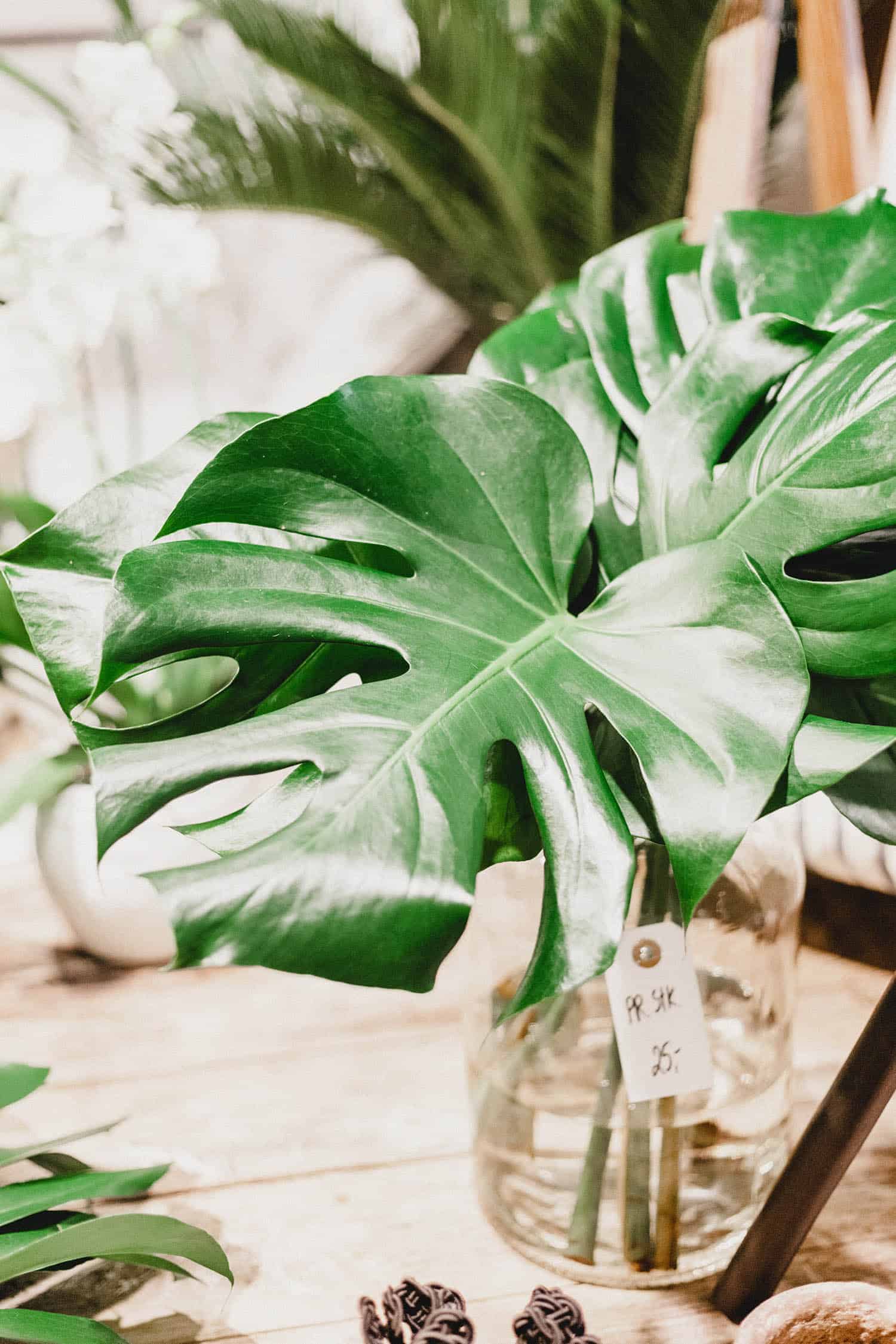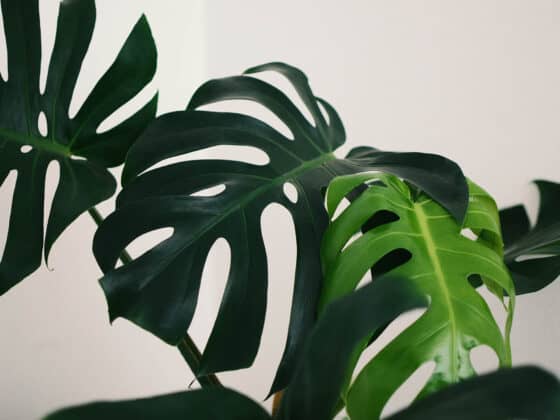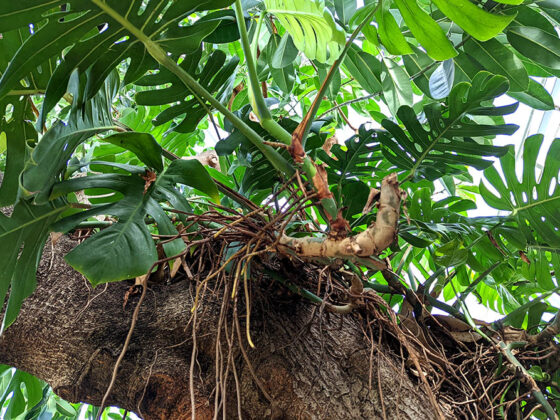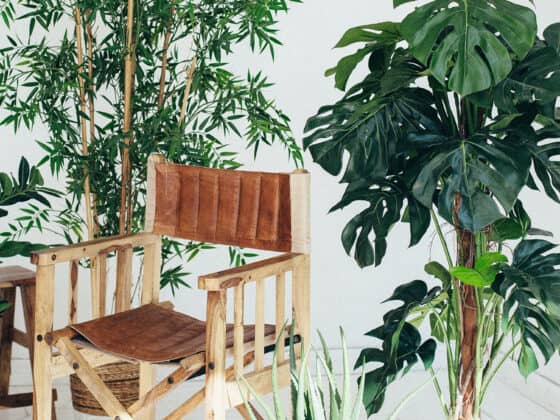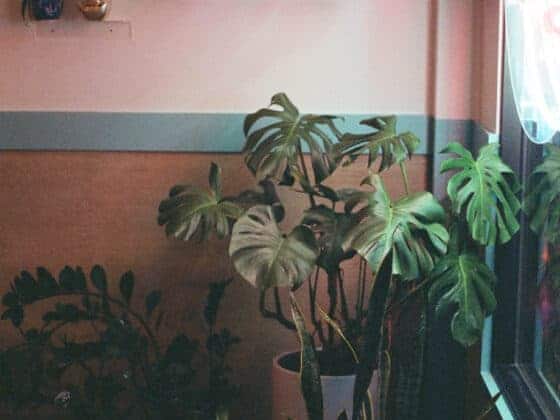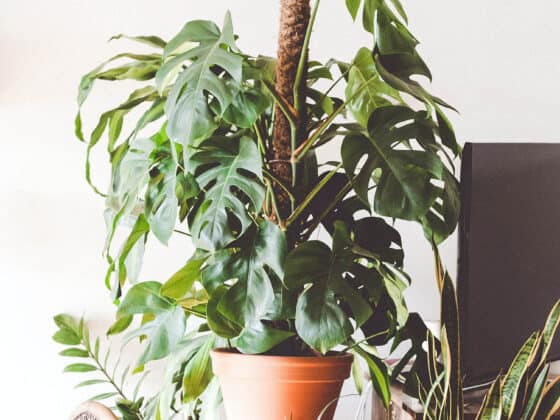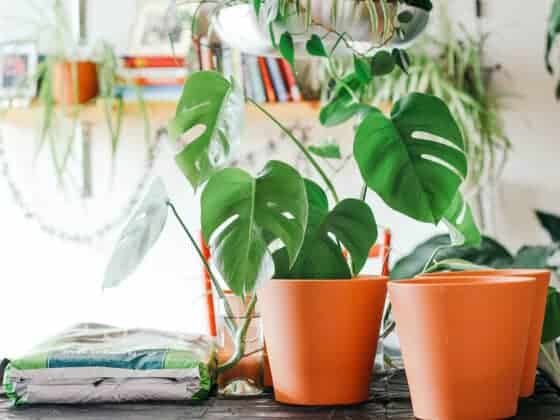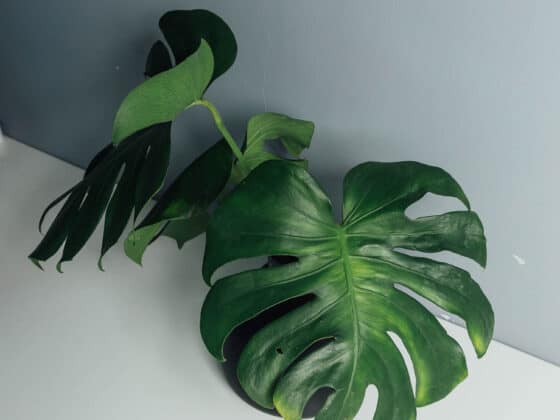People love to grow Monstera deliciosa for its large, glossy, dark green leaves with distinctive slits and splits. But aside from just letting this plant grow tall and spread out, you may be wondering what other possibilities there are for using the leaves around your house. Can you keep them in a vase? Can you use them for propagation? What are your options?
Can you propagate a Monstera from a leaf? Monsteras cuttings and leaves need to have at least one node for propagation. If your leaf has a node, it will reproduce and grow into a new plant. If it does not, Monstera leaves can be used as decoration or can be combined with other cut flowers.
After pruning my plants, I always want to reuse the cuttings if I can – I hate throwing them away! Some cuttings are suitable for propagating, while others are not – you can read about cutting types below. Even if your Monstera cuttings can’t be used to propagate, they can bring a bit more beauty and joy to your home by being used as a decorative element.
Can You Grow a Monstera From a Leaf?
The first thing you might think of when evaluating uses for a Monstera leaf is whether or not it could be used to propagate a new plant. After all, stem cuttings are a popular way to add more Monsteras to your collection.
Monsteras are indeed easy to propagate from cuttings, but there are a few essential things to know about which cutting will or won’t grow into a new plant. First off, you will always need a node on the cutting to provide the necessary components to grow into a new plant. If you aren’t sure about what a node is or how to find one on your Monstera, read my article all about Monsteras and nodes here.
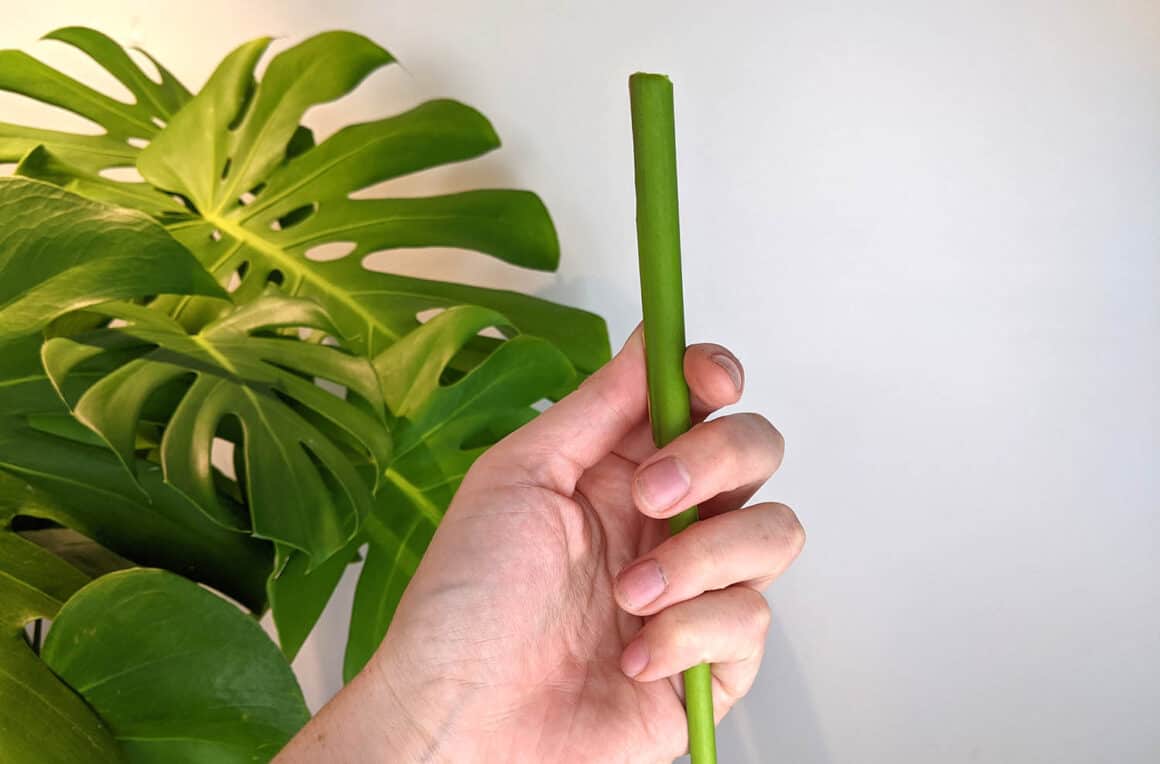
To the untrained eye, it can be a bit difficult to tell if a cutting has a node or not. An easy way to determine that there is a node on your Monstera cutting is if you can see aerial roots starting to emerge from the stem. Aerial roots can only grow from a node, so that is a sure sign. Often you can see a small bump or knot on the stem even before the aerial roots actually emerge.
If your Monstera deliciosa cutting does not have a node, it is considered a leaf cutting and not a stem cutting. Although some other houseplants can be propagated from leaf cuttings, Monsteras can not.
Will Monstera Leaves Root?
Monstera leaves that are kept in water will sometimes grow roots. The roots will emerge from the base of the petiole (that point where a leaf branches off from the main stem) and help draw water up into the leaf. A Monstera deliciosa leaf with roots will stay green in water a bit longer than one that doesn’t develop roots because of this increased water uptake.
As mentioned above, however, these roots can be misleading. It would be natural to assume that a new plant will develop from the rooted cutting since this is the same process used for water propagation. Unfortunately, though, a Monstera leaf with roots that develop from the petiole cannot grow into a full plant on its own. It will always just be a leaf because there isn’t a node to split off into new growth, and the cutting will eventually die off.
Keeping Monstera Leaves
How long can Monstera leaves be kept in water? Leaves last for a surprisingly long time compared to cut flowers or other plant cuttings that aren’t being propagated – even up to three weeks. This makes them preferable to some other greenery that can wilt after just a few days. There are a few things you can do to keep Monstera deliciosa leaves looking fresh even longer.
A lot of this advice is similar to methods of keeping flower arrangements fresh. Changing the water daily or at least every couple of days is the first and most important way to keep Monstera leaves green for as long as possible. If you have a commercial flower preserver, adding a bit to the water each time you change it will give your Monstera leaves an extra boost.
Also, the way you cut the stem can affect how long your leaf lasts in water. Try cutting at a 45-degree angle to increase the amount of water the leaf can take in. Keep an eye on the bottom of the stem and trim it if it starts to turn brown.
By using these tips (individually or ideally in combination), you should be able to keep your Monstera leaf green for around three weeks – or maybe even a bit longer!
Ideas For Decorating With Monstera Leaves
Monsteras are versatile, and their leaves can be used to decorate in several ways depending on the effect you want. Although they are often associated with tropical imagery, they can be incorporated with interior themes from boho to minimalist and everything in between. Here are just a few ideas for decorating with Monstera leaves.
Monstera Leaves in a Vase
The simplest way to decorate with Monstera leaves is to put one or several of them in water inside a vase or other decorative container. A single Monstera deliciosa leaf in a vase makes an elegant centerpiece or decorative accent anywhere in your home. This is a great way to add life to an area of your house where there is not enough light to actually grow plants, like a windowless bathroom.
Monstera Leaves in a Floral Arrangement
Monstera leaves also make a great backdrop to floral arrangements when combined with other cut flowers and stems. Given Monstera deliciosa’s leaf size, it makes the most sense to pair it with other large and striking plants. Bird of Paradise (Strelitzia), Lobster Claw (Heliconia rostrata), and orchid flowers all go well with Monstera deliciosa. Monsteras’ dark, glossy leaves make the perfect backdrop to show off brightly colored or white flowers. I have even seen them used in bridal bouquets!
Monstera Leaves as Table Decoration
For a dinner party with a jungle or tropical theme, large Monstera deliciosa leaves can be used in place of or in addition to a placemat. You could wrap the leaf around the outside of a glass candle holder to create a unique lighting statement. Or you could lay several Monstera leaves end-to-end and use them as a table runner.
Pressed Monstera Leaves
You may not have thought of pressing plants since you were a kid, but it’s actually a super satisfying and fascinating process. I used to press maple leaves and flower petals in a book, but often Monstera leaves are a bit too large to use a book for pressing.
Instead, you can sandwich the leaf between a solid surface and a heavy weight with newspaper (or pressing paper if you already have some) on either side to absorb moisture. It is a faster process if you change the paper out every couple of days as the leaf starts to dry out.
Note that a dried Monstera leaf will turn brown but may also develop some interesting textures and patterns that you might not see in a living leaf. After it is dry, you could frame it to use as a piece of art, either on a colored background or between two pieces of glass.
Making Prints from Monstera Leaves
You can make an artistic print of one or more Monstera leaves. You’ll need some ink or paint (acrylic works fine) and a paper or canvas surface to transfer the image onto. Paint a thin layer of your paint onto the front of the leaf as evenly as possible. Then press it, paint-side down, onto the surface, and use your hand or the back of a spoon to push on the back of the leaf. As the paint transfers, it makes a print of the leaf’s shapes and textures.
It’s a good idea to do a test print on some scrap paper before doing your final one. This allows you to check the results and make adjustments as needed. You should be able to wash the paint or ink off your leaf and use it a few times if you are careful not to damage it.
How to Take a Proper Cutting for Propagation
Different types of cuttings can be used to clone different plants. It’s important to know your plant’s requirements for taking cuttings to be used for propagation. If you just want to decorate with a piece of Monstera leaf, it’s not that important to cut it in any particular way, but if you are using it for propagation, you will need a stem cutting that includes a node.
To generate new growth, a Monstera deliciosa cutting needs (at minimum) a full node. Once you have identified the node, you will want to ensure that you cut at least an inch below it so that the entire node is included with your cutting. Make sure you use sterilized cutting tools (a garden knife or shears), so you don’t spread disease to your plant.
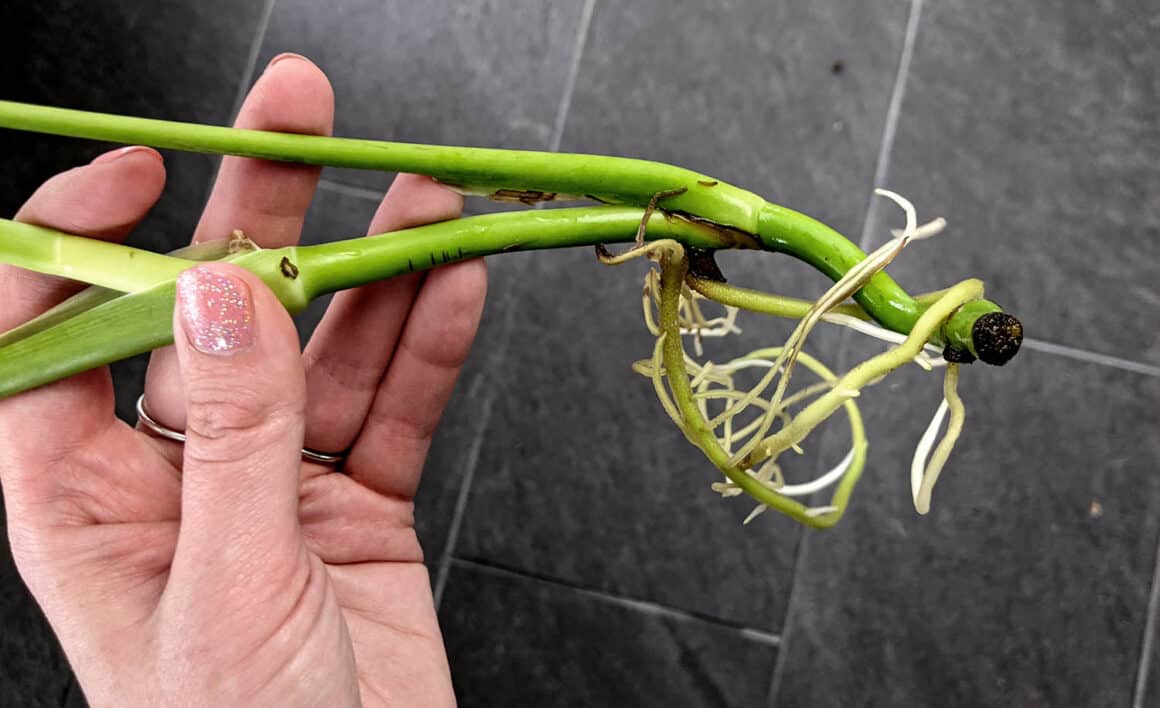
An ideal Monstera deliciosa cutting for propagation will have one or more nodes and some aerial roots, plus two or three leaves. However, Monsteras are easy to propagate and can be propagated from even the most minimal cutting with just one node and no leaves. This takes a little more time and some more attentive care, so propagating a node cutting isn’t recommended for beginners.
Monstera deliciosa cuttings can be rooted in water, moss, or potting mix. If you choose water or moss as the rooting medium, the cuttings will be ready to move into potting soil once the roots are a few inches long. This usually happens within a couple of months, depending on the season and the conditions the cutting is growing in.
If you still have questions about identifying nodes or want to know what is required for propagation, read my article Everything You Need to Know About Monsteras and Nodes.
Closing Thoughts
Most Monstera deliciosa owners eventually need to prune their plant, either for appearance or size. The pieces that get cut off can be used for propagation (if they are stem cuttings with nodes) or decoration.
Decorating with Monstera leaves could be as simple as sticking the cutting in a vase, but you can also incorporate these leaves into a variety of other projects that make the most of this plant’s distinctive leaf size and shape. Using the tips in this article as a springboard, you can think of even more creative ideas for decorating with Monstera leaves!






